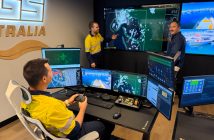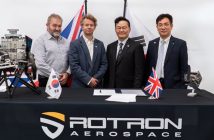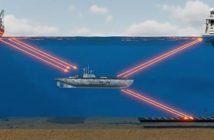Twenty years ago, the internet revolutionized computing. Over the next few years, it will revolutionize the car. Bosch is making cars an active part of the internet – and bringing drivers a range of benefits. “A connected car is always going to be a better car,” says Wolf-Henning Scheider, the member of the board of management of Robert Bosch GmbH with responsibility for the Automotive Group. By networking vehicles, Bosch is improving the comfort, safety, and efficiency of tomorrow’s mobility. At the same time, Bosch is bringing the fascination of the digital world onto the streets of the physical world. In this, the company is pursuing three strategic objectives. First, Bosch is making the internet an intuitive in-car experience. Second, Bosch is connecting cars to the internet and creating driver assistance functions with added value. And finally, Bosch is networking cars with traffic infrastructure. “Connectivity is about more than just being able to surf the net on the open road,” says Scheider. Bosch is hard at work on all the necessary technologies and has already brought a selection of solutions to series production. In the future, we will see completely new functions emerge. For instance, in-car augmented reality will connect the virtual world with the physical world. The windshield will become the car’s main display area, bringing all vehicle information as well as data on the surroundings into the driver’s field of vision.
Objective 1: Making the internet part of the car
Connectivity is well on the way to becoming a megatrend in the automotive industry, as digitalization changes the lives of more and more people. And cars themselves will be a factor in how digitalization spreads. This is why Bosch engineers are working on solutions that are both intuitive and sophisticated. One of them is MySpin, a system that integrates iPhones and Android smartphones fully into the vehicle, with the phone’s display appearing on the vehicle’s main display. This makes using apps in the vehicle much easier, safer, and more convenient.
Bosch is also bringing the internet into the car without the help of cell phones. Today’s navigation systems can, for instance, find you a French or Italian restaurant. Future Bosch services will save drivers of electric vehicles the trouble of looking for charge spots by guiding them directly to the nearest available one, as well as letting drivers reserve the nearest parking space and guiding them to it.
Bosch is even connecting the powertrain to the internet. Bosch’s eHorizon system lays the groundwork by bringing together decades of systems competence in powertrains with innovative software programming. “We are bringing the mechatronic world and the digital world together,” says Scheider. Bosch has been offering eHorizon for commercial vehicles since 2012 as a way to smooth journeys out and reduce the amount of unnecessary acceleration and deceleration. For example, when this navigation software sees that the current two-kilometer downhill stretch of road leads to a built-up area, it can tell the vehicle to enter its most fuel-efficient mode or to charge the battery. This helps drivers save up to 15 percent of fuel. In the future, navigation data will be complemented by up-to-the-minute traffic data from the internet, so that vehicles can coast to a halt before they reach a traffic jam. This kind of connected navigation, where vehicles make use of data from the internet, is the future not only for trucks but also for passenger cars.
Objective 2: Making the car part of the internet
But the data highway in cars is no one-way street. Vehicles will not only use information from the internet, they will also provide information to their environment. That’s why Bosch is making vehicles part of the internet. “In connecting vehicles to the cloud, we see data protection as a fundamental requirement. The benefits have to far outweigh the potential risks,” says Scheider. To this end, Bosch subsidiary escrypt is developing security solutions that are tailored specifically to cars, such as standalone encryption.
Vehicles will in the future become sensors in their own right, gathering information about their surroundings and exchanging them with each other or with a server. Known as floating car data, this information is required both for highly dynamic maps and to improve vehicle safety. Whereas the driver sees no more than a bend ahead, the navigation system is already aware that just beyond it is a patch of ice or the tail end of a traffic jam. This means cars or trucks can be stopped from causing a pile-up or plowing into a line of standing traffic; the system can either warn the driver or automatically initiate a braking maneuver. “Connectivity is a building block in automation – and vice versa,” says Scheider.
There are already some applications in which vehicles communicate with the outside world. One example is the eCall, which will be mandatory in the European Union from 2015. When accidents occur, vehicles will automatically call the emergency services, with the call activated by the same sensors that trigger the airbag. This can reduce the time it takes for emergency crews to reach the scene by 50 percent in rural areas and by 40 percent in urban areas. Bosch’s role goes far beyond the technology itself. The company serves as the interface between the accident on the one hand and the emergency services on the other. Bosch associates deal with the emergency calls in an operations center to ensure that information for the emergency services is quick and precise.
Quite apart from improving safety, this approach to collecting vehicle data will also help to save money – especially for companies and fleet operators. With Leaseplan, Bosch is networking vehicles to allow completely new forms of fleet analysis. The company is also driving forward solutions for preventive maintenance. For instance, engine data from diggers or wheeled loaders can be sent to a database, analyzed, and compared with a constantly growing archive of data from similar vehicles under similar stresses. This allows Bosch to predict whether, and more importantly when, an important component will reach its wear limit – so that the component can be replaced in good time. Taking the example of the digger, this would avoid downtime and save lots of money: every hour that this kind of machinery is out of action costs its operator up to 2,000 euros. In the future, this type of functionality could also feature in passenger cars. One application could be a wear indicator for engine parts. This would let drivers replace a damaged part before they suddenly end up stranded at the side of the road.
Objective 3: Making the car part of the internet of things
Connecting the car to the internet is something that goes far beyond even these applications. “Automotive connectivity marks the start of a new era – until now, cars were isolated from their surroundings, but now the two will interact,” says Scheider. An entire metropolis, infrastructure included, could be networked to guarantee optimum mobility. Anyone wanting to travel from downtown to the outskirts could use a train in central districts and then switch to a car-sharing scheme later in the journey. Bosch platforms with service brokering allow public transportation companies, electric car hire companies, and e-bike rental companies to work together to offer an integrated mobility service.
Bosch software platforms already manage the infrastructure for major electromobility trials. One example is Hubject, the roaming system for charge spots, which allows customers to charge their electric car at charge spots belonging to various companies and pay conveniently via their normal electricity bill. But Bosch is also active beyond electromobility. Truck Secure Parking, for instance, is an online booking service for truck parking spaces along freeways. All the spaces feature video surveillance and are networked with a Bosch call center, which guarantees safety for drivers and freight.
Bosch is even working on how to put a whole city onto the internet of things. Bosch digital networking technology has been in operation in Monaco since mid-November 2013. This was the first step in putting into action a cooperation agreement signed by the Principality of Monaco and Bosch in July 2012. The project offers a glimpse of a future in which mobility is the primary focus of the connected city. There is no shortage of suitable applications – directing drivers to the nearest charge spot, booking and paying for parking spaces, switching to e-bikes as traffic dictates – and these developments can been found in all the world’s megacities.
This is why Bosch considers automotive connectivity to be a global market. Customers and car companies around the world are getting to grips with how to network the car. Automated, connected vehicles can for instance improve traffic flow by 80 percent, or guarantee safe, comfortable mobility for older people. What’s more, studies suggest that the number of road traffic fatalities could be reduced by up to 90 percent as vehicles become progressively more automated. In its efforts to connect cars to the internet, Bosch is in close dialogue not just with global automakers but also with innovative companies in other sectors – in Europe, North America, and Asia.





